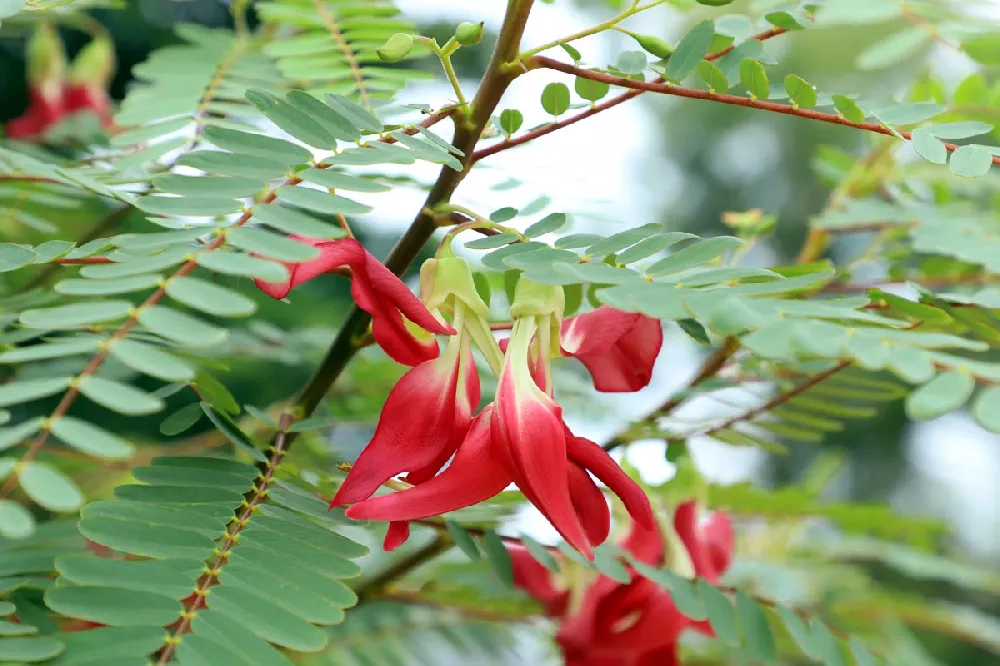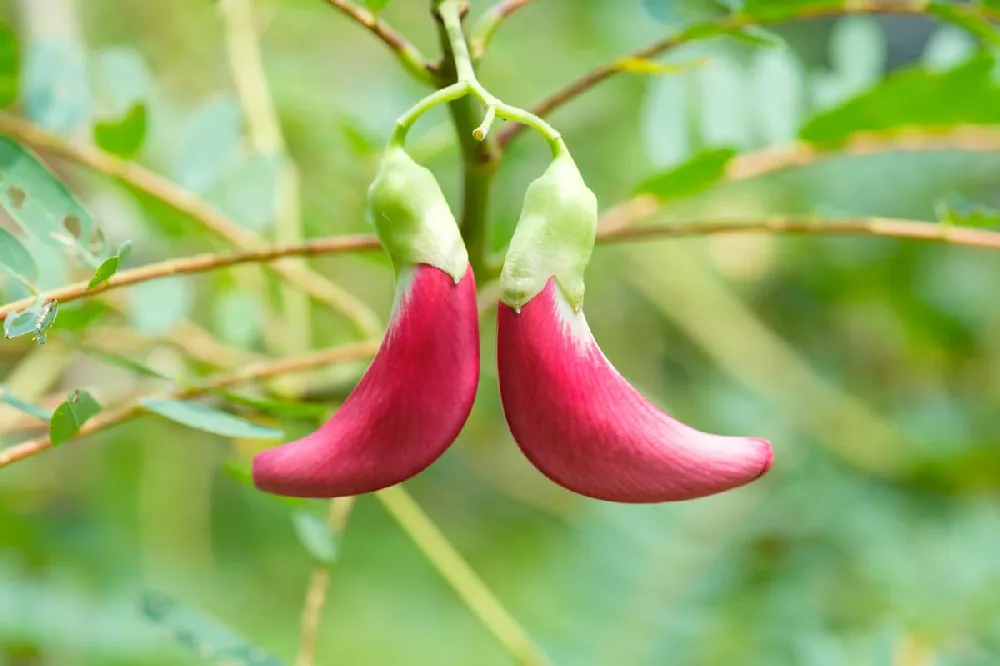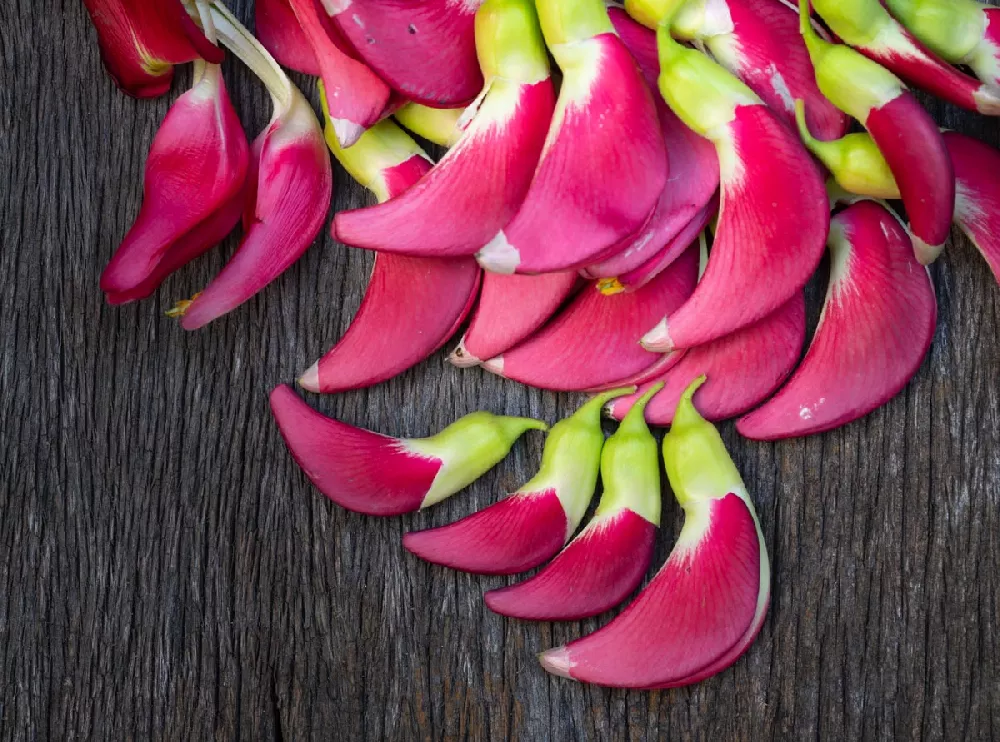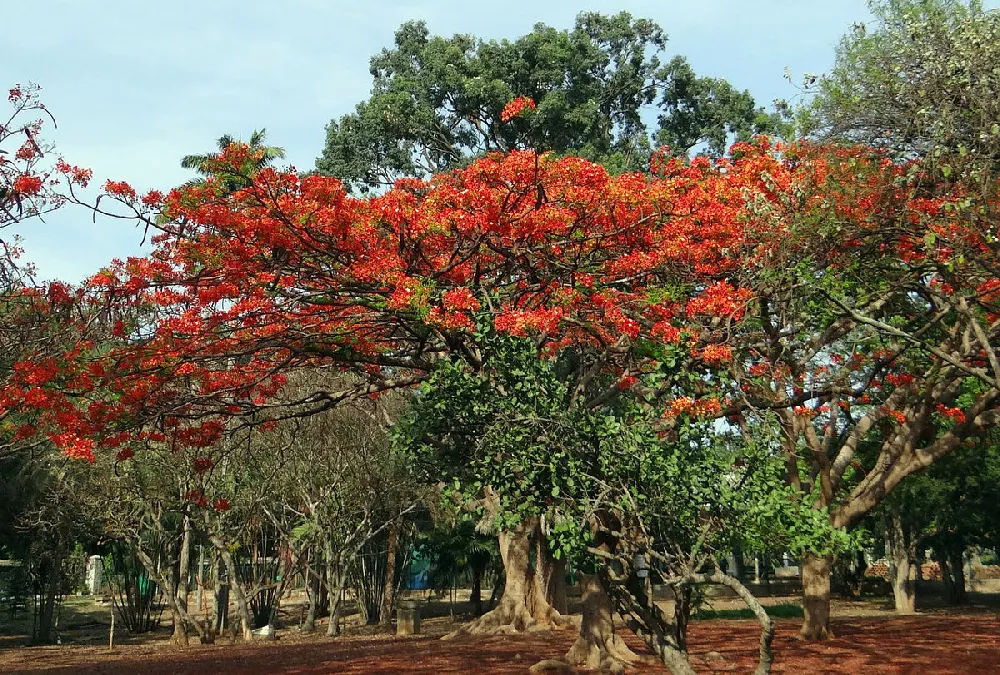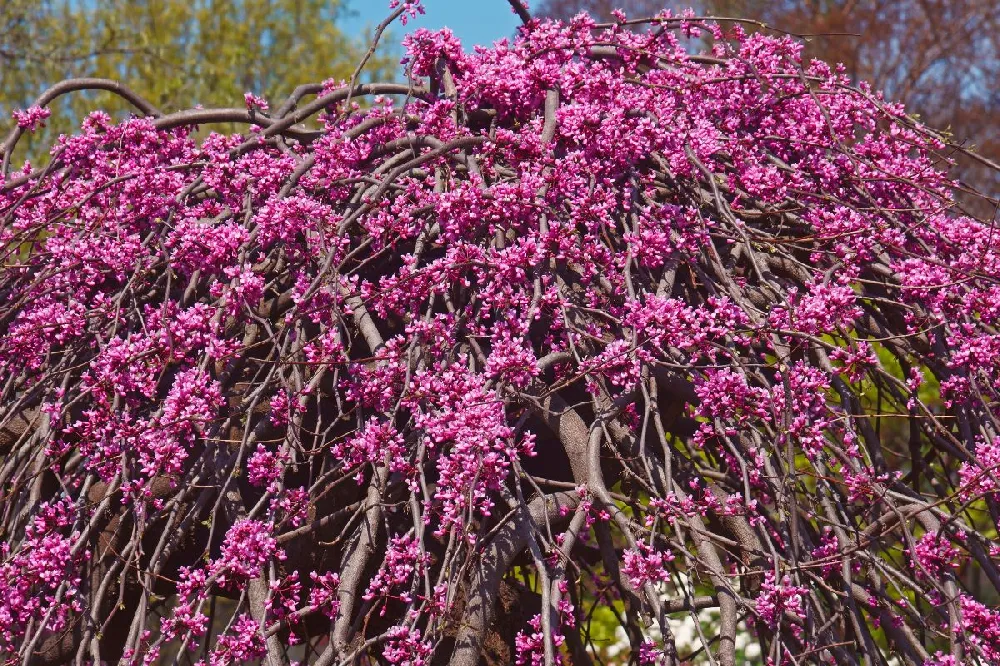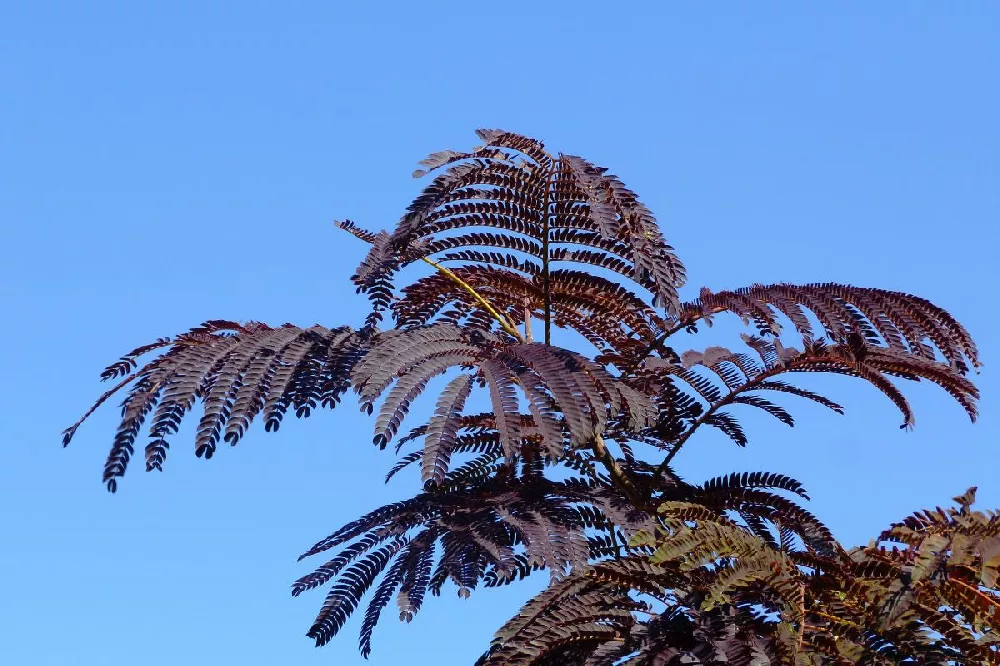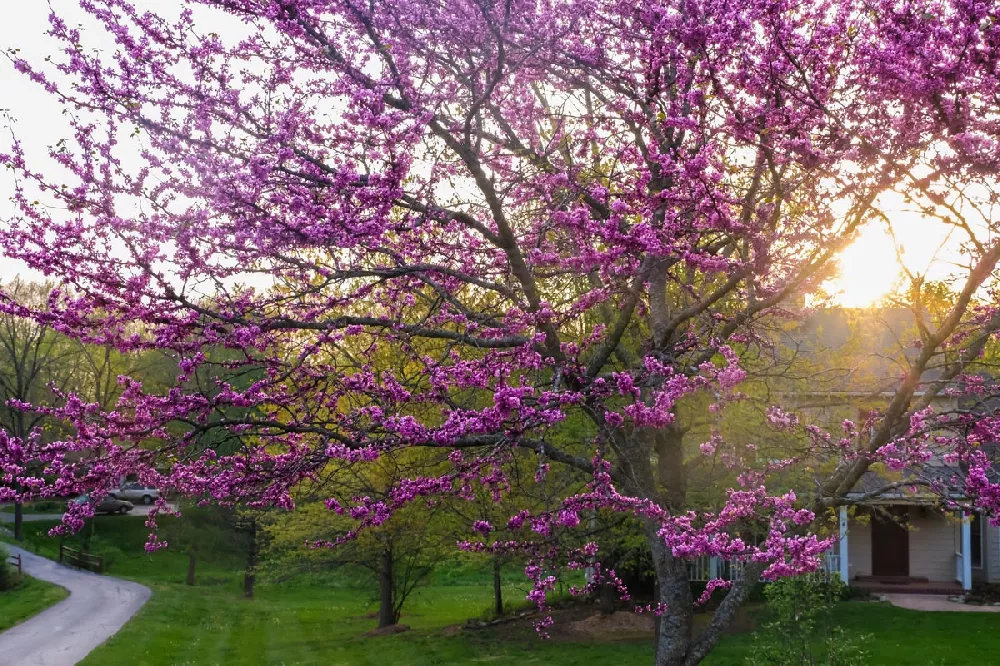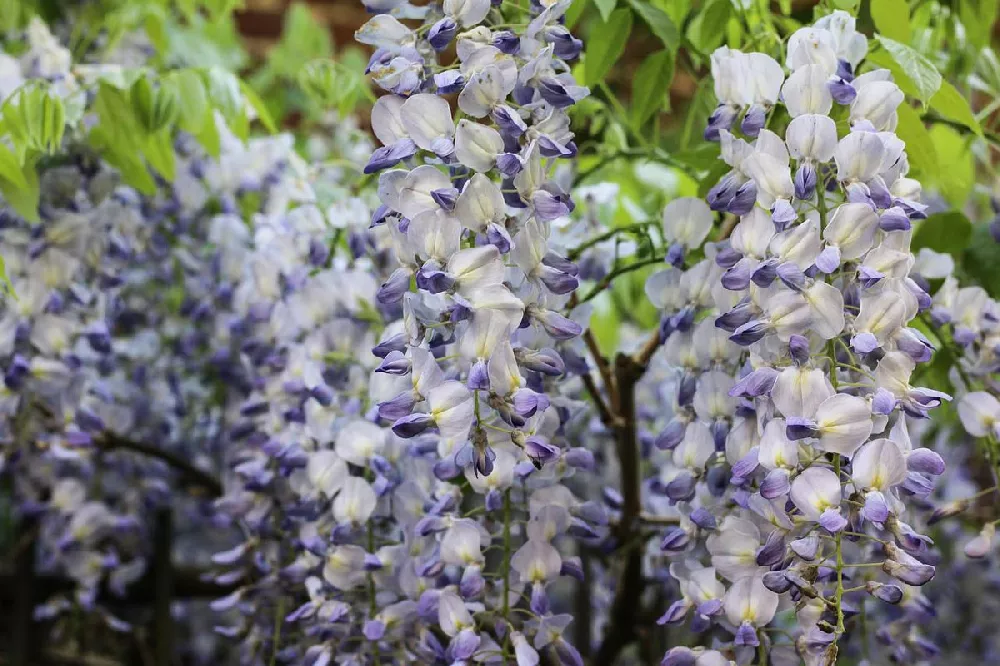Hummingbird Tree for Sale - Buying & Growing Guide
The well-named hummingbird tree, Sesbania grandiflora, has vibrant red flowers that look, if you glance at them quickly, like a flock of hummingbirds hovering around the tree. Native to Southeast Asia and Australia, it grows well in hot, humid climates such as the southernmost points of the U.S. But northern gardeners shouldn't despair: The hummingbird tree grows beautifully in containers, and it can bring a touch of tropical splendor to the patio or living room. Even when not in flower, the tree is attractive, with a slim trunk and pretty, fern-like leaves. Need more convincing? Here are some additional reasons to love a hummingbird tree.
- This tree is also frequently called a vegetable hummingbird tree because almost every part of the tree is edible.
- The hummingbird tree is attractive to pollinators, from bees to hummingbirds.
- Once established, it doesn't need supplemental watering except in the most drought-like weather.
Enter your zip code to find nearby stores that may carry this plant.
Plant Care
Sunlight

Plant your hummingbird tree where it will receive at least six hours of direct sunlight a day.
Watering
This tropical tree loves moist soil, but it can handle dry conditions without extra water once it is established.
Fertilizing

Feed your hummingbird tree in spring with a general purpose, balanced fertilizer, such as a 10-10-10 formula.
Planting and Care
Planting instructions
If planting your hummingbird tree outdoors, choose a sunny location that receives at least six hours of sun a day, with soil that drains well. Unpot the sapling and tease out any encircling roots, which can girdle the tree and eventually kill it. Dig a hole that’s as deep as the root ball and twice as wide. Place the tree in the hole and, while holding it upright and steady, fill in around it with good-quality topsoil, tamping down as you go to eliminate air pockets. Water thoroughly. Apply a 2- to 3-inch layer of an organic mulch, such as bark chips, to conserve moisture and hinder weeds.
Watering and nutrients
During your tree’s first few weeks, water it every other day. Once you see new growth starting, you can cut back to a once-a-week watering, giving the tree at least an inch of water each time. After a year or so, once the tree is established, it won’t need supplemental water unless you’re experiencing drought-like conditions. Fertilize your hummingbird tree in spring with a slow-release, general purpose fertilizer, preferably one designed for tropical plants.
Pollination
Hummingbird trees are, not surprisingly, pollinated by small birds, such as hummingbirds. They are also popular with insects, such as honeybees, which are attracted to the bright flowers. Pollinated flowers grow into long, thin bean-like pods that are eaten as a delicacy in the tree’s native range.
Pruning
Your hummingbird tree needs little pruning. Monitor it throughout the year for any broken, diseased, or damaged limbs, and trim them back to healthy wood when you see them. Also cut out any suckers that grow near the base of the trunk.
Pests, diseases, and animals
The hummingbird tree has few pests or diseases. If your tree is container-grown, keep an eye on it while indoors for aphids, red spider mites, scale insects, and thrips. These are all common with plants grown primarily indoors. Handle infestations by wiping down the leaves to remove insects with a damp cloth. A general purpose insecticide can be used as a last resort. For plants grown outside, small animals, such as squirrels and other rodents, may be drawn to the edible pods.
Achieving maximum results
Growing your hummingbird tree in a container isn’t difficult. Choose a pot that is roughly twice the size of the root ball with good drainage and fill it with potting mix. Plant the tree according to our directions above, and water it until water begins to seep out of the bottom holes. You may need to water your container-grown tree more than you would if it was grown outside. In winter, set your tree in a sunny window in a shallow tray of water to increase the humidity, and mist the leaves regularly.
FAQs
What is the hummingbird tree used for?
In its native range, Southeast Asia, the bean-like fruits, flowers, and young leaves are eaten, usually after being cooked. Its leaves are used as a diuretic, and a tea made of the leaves is believed to have antibiotic properties. The bark, meanwhile, is used to treat stomach ailments. The wood is an excellent source of cut timber used in construction.
How fast does a hummingbird tree grow?
The hummingbird tree is a speedy grower, putting on significant growth each year. Unfortunately, it does not live long, having a life cycle of roughly 20 years. When grown in hot, humid environments, it can reach a height of 30 to 40 feet within a decade. Container-grown trees, however, can easily be constrained to a convenient height by annual pruning.
How can I use a hummingbird tree in my landscape?
This versatile tree can play many roles in your garden. It can serve as a windbreak or privacy hedge, and, when allowed to grow to its full height, it makes an excellent shade tree. It can be used as a backdrop for other flowering shrubs and perennials, since its attractive, fern-like leaves provide a lovely textural background for other plantings. If container-grown, consider having two in decorative pots flanking your front door or the entry to your patio.
Compare Similar Products
You can't add more Product Name - Product size to the cart.
OK